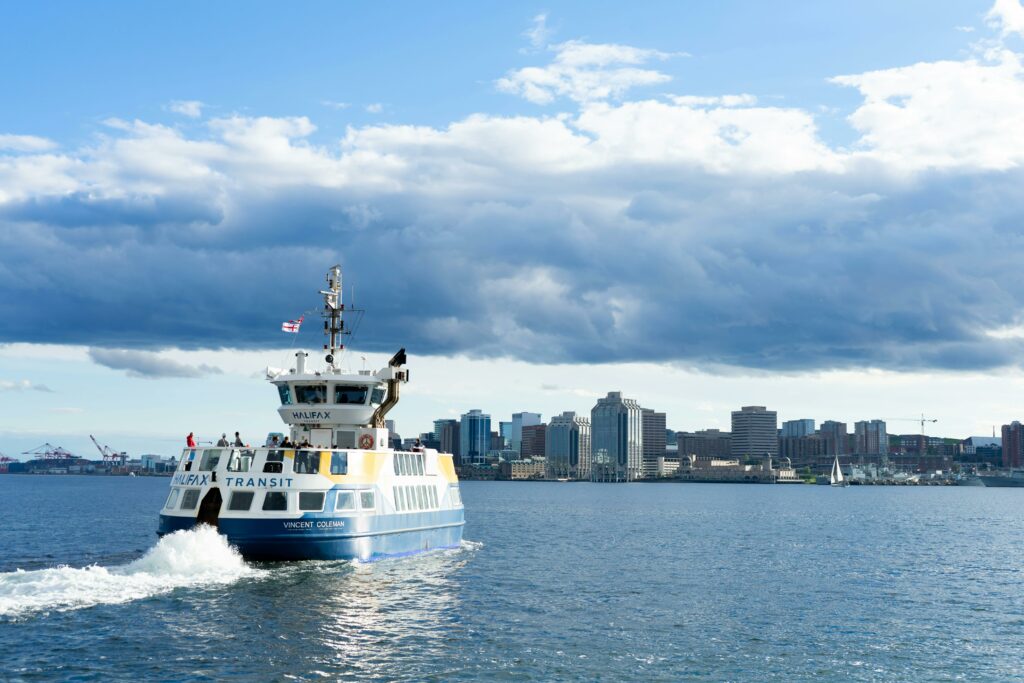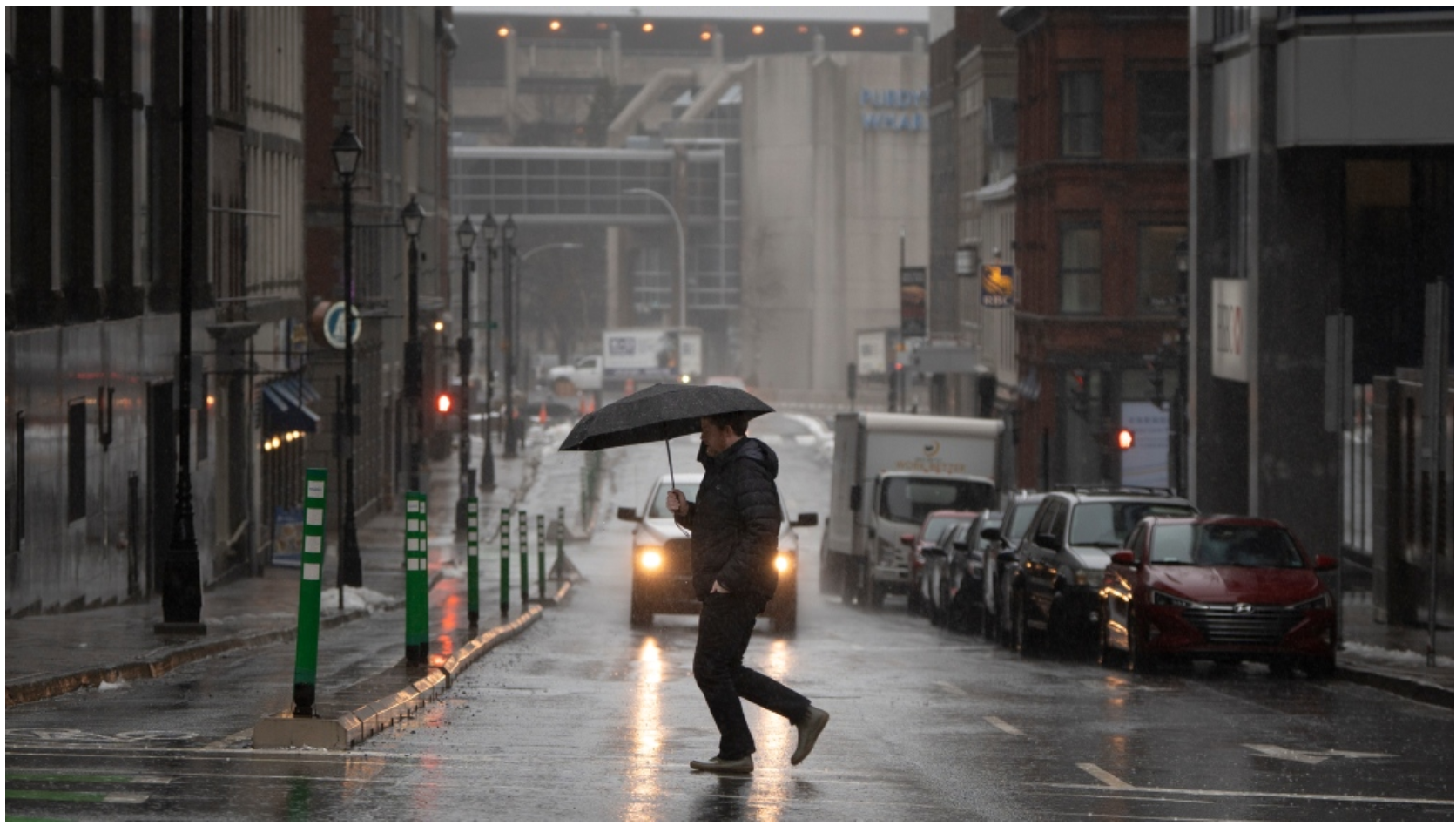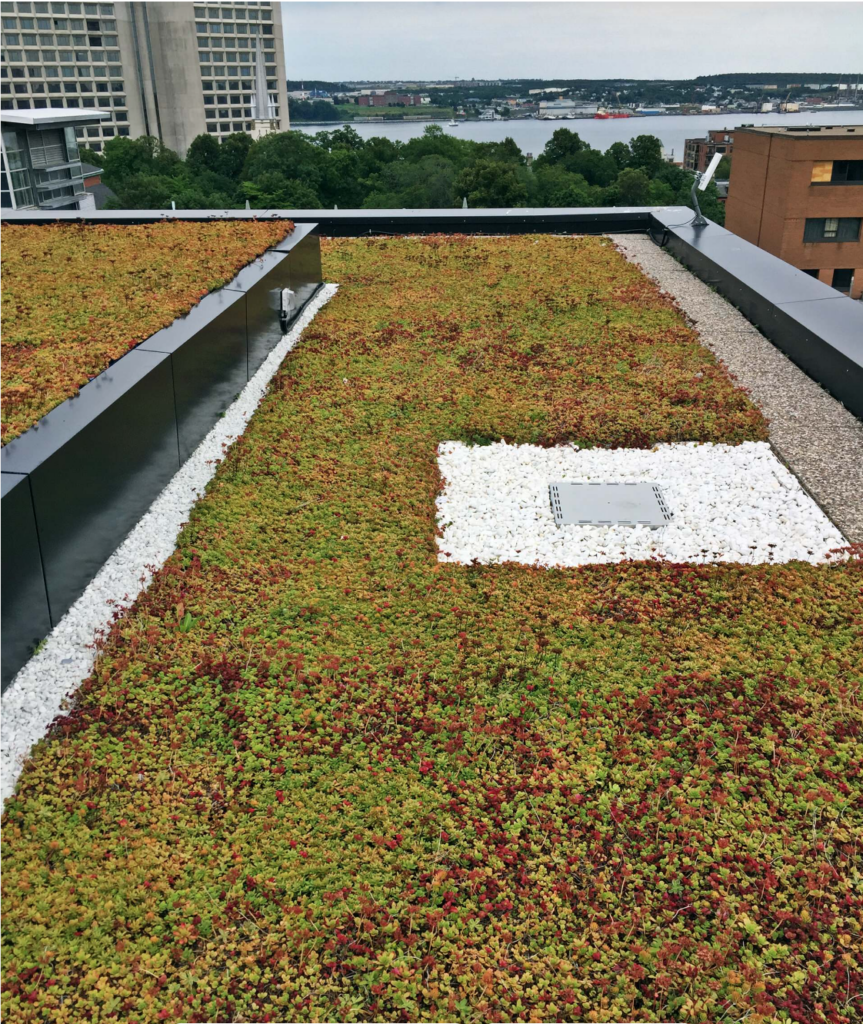Author: Rachel Wadden
Date: Aug 18, 2024

Area of Impact:
Halifax
Article Information and Location:
In Halifax, green roofs net great results
Evert Lindquist, Canada’s National Observer, June 3rd, 2024
INTRODUCTION
Nova Scotians are no strangers to water. Labeled ‘Canada’s Ocean Playground’, visitors and locals alike are never more than 56 kilometers from the ocean at any given time. Featuring some of the highest tides in the Bay of Fundy and tallest ships at the Halifax Harbour, water can certainly be placed as a trademark for the small fishing province. However, as global warming continues melting ice caps, Nova Scotia’s closest acquaintance has begun stirring trouble.
While taking the coastal drive to Peggy’s Cove, a staple landmark for anyone visiting Nova Scotia, visitors will notice a new bridge near Blind Bay. This one-lane bridge was constructed as a temporary solution to the destruction of the July 2023 floods; a section of the road was washed away, leaving a new river in its wake. Unfortunately, this flooding was not a novel event. As the earth warms, heavy rain falls and flooding are becoming more familiar each year. Halifax, the province’s capital city, is at an increased threat of flooding as its urban streets do not feature many green spaces to absorb the water. With an average of 1.35 meters of rain each year, the Halifax municipality has started brainstorming possible ways to combat the threat of floods. A popular solution: green roofs.

Image from CTV News
INFORMATION AND SIGNIFICANCE
A green roof is the establishment of plants and soil on a building’s roof. High up in the air, these plants then function to capture carbon, moderate temperatures, and reduce flooding. The Halifax Central Library, a building known for its stunning architecture, excellent programs, and glorious view from the top floor, is one of over 50 green roofs in Halifax. Although it is a place to relax, connect, and learn, the library is also functioning as a flood prevention center. Their roof, covered in over 650 square meters of soil and sedum, absorbs a large portion of rainfall that otherwise would run through the city streets. On notably heavier rain days, the rainwater that is unable to be absorbed is filtered through drains that redirect the collection to a gray water cistern where it is used to support the facility’s bathrooms.

Halifax Central Library Green Roof, Image Adapted from Houzz
While the library’s roof is a beautiful system to recycle excess water and combat flooding, the roof does reportedly require considerable maintenance. In addition to upkeep, the process of creating green roofs can be complex when considering the particular plants and soil that can survive the harsh conditions of roof life. Luckily for Nova Scotians, Jeremy Lundholm, an ecology consultant and adjunct Saint Mary’s University professor, has spent the past 20 years studying which native plants can withstand Halifax green roofs. With the support of this research and anecdotal experience, Nova Scotians can take part in creating green roofs in their own homes with a bit of research and a trip to their local garden center.
While these green roofs have proven beneficial in preventing flooding in Halifax, developments remain concerning other climate benefits these roofs could have. Trees and shrubs, the best carbon absorbers, have difficulty retaining life on these green roofs through the lack of soil and harsh conditions. Currently, only about five percent of green roofs in Halifax have trees or shrubs. By working towards deepening the soil and adding more biomass to these roofs, carbon capture will be maximized, and urban areas will be able to continue contributing to climate justice.
CONCLUSION
Like Superman, Batman, and Spider-Man who fight villains, green roofs are our superheroes when it comes to fighting floods in cities. Their soil soaks up rainwater like a sponge and redistributes it to be reused rather than flooding the streets. These roofs also moderate temperature, keep things cool when it’s hot, and give our airborne animals a place to hang out. As the climate continues to warm and extreme weather becomes more common, green roofs may be the secret weapon for cities looking to stay safe.
